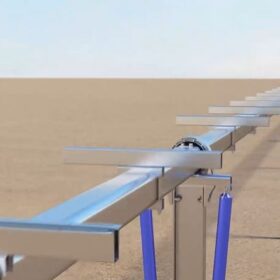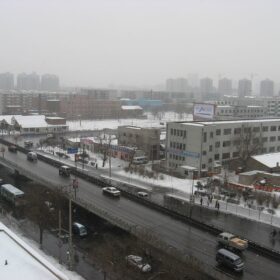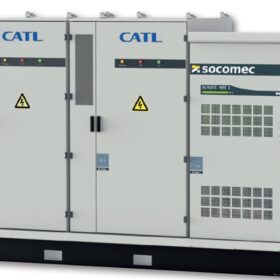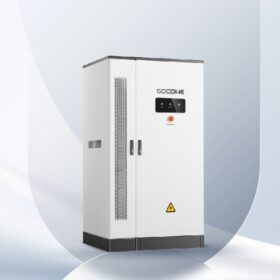Trina Solar unit releases new version of Vanguard 1P solar tracker
TrinaTracker, a division of China’s Trina Solar, says its new Vanguard 1P tracker system has a maximum length of 140 meters and can be equipped with N-type modules.
Performance assessment of air-source heat pumps in office buildings
Scientists have analyzed the performances of two air-source heat pumps in two small office buildings in China during the heating season. They identified the instantaneous load of the building as a critical cause of low energy efficiency.
Enhancing PV performance with graphite-based thermoelectric generator
Indian scientists have built a PV system coupled with a thermoelectric generator using graphite as a heat dissipator. The graphite-based system achieved a higher output and temperature gradient than a reference system without heat dissipation.
Socomec releases new modular energy storage system
Socomec says its new modular energy storage system includes a converter and up to six battery cabinets. At maximum capacity, it can store 1,116 kWh.
GoodWe releases 60 kWh battery for commercial, industrial PV systems
GoodWe has developed a 60 kWh battery for commercial and industrial PV systems, featuring a compartment for its ET15-30kW inverter series.
UK researchers identify optimal heat pump design minimizing system transition costs
Researchers led by the Imperial College London have analyzed the effects different kinds of air-to-water heat pumps will have on the UK energy system, based on their coefficient of performance and price. They also identified a point of diminishing returns, after which it is more cost-effective to invest in centralized energy generation and storage.
Trina Storage releases 4.07 MWh energy storage system
Trina Storage has developed a 4.07 MWh energy storage system featuring its in-house 306 Ah lithium iron phosphate battery cells, configured with 10 racks of four battery packs.
Bifacial agrivoltaics for olive groves
A Spanish-Italian research team has investigated different system configurations for bifacial agrivoltaic solar arrays deployed in olive groves and has found that the solar modules’ tilt angle has a significant impact on power yield while their height plays a crucial role on increasing agricultural yield.
US researchers develop 108 cm2 perovskite solar module with 19.21% efficiency
The scientists built the panel with perovskite solar cells treated with trifluoromethane sulfonate to combat iodide defects. The mini module reportedly achieved the highest efficiency ever recorded for its size to date, with the result being confirmed by the US National Renewable Energy Laboratory (NREL).
Deep-learning tech for dust detection in solar panels
Researchers from China and the UK have improved the Adam optimization algorithm to achieve better results in dust detection on PV panels. The optimized algorithm reportedly performed better than most common algorithms used for dust detection.










